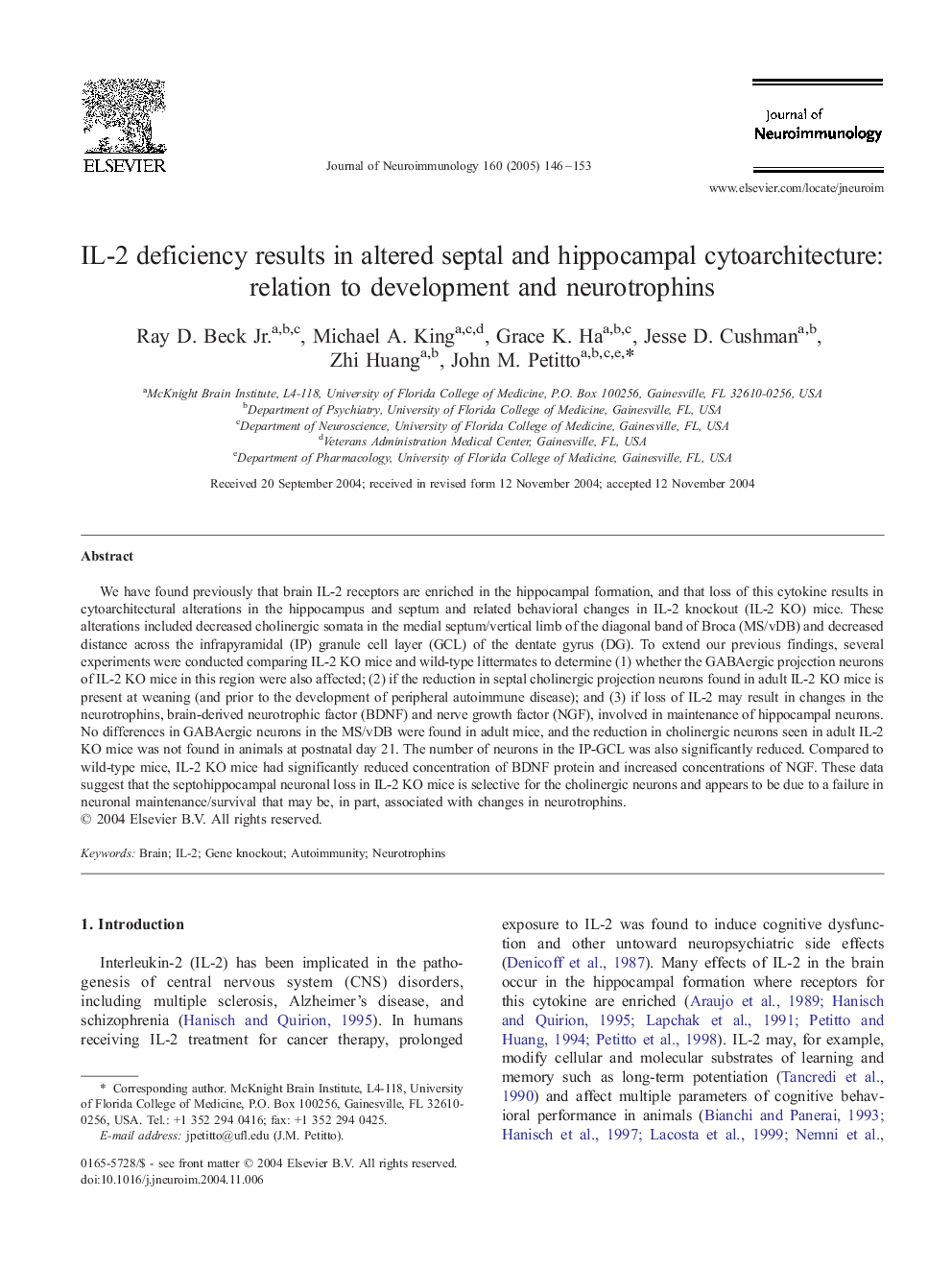| Article ID | Journal | Published Year | Pages | File Type |
|---|---|---|---|---|
| 9194629 | Journal of Neuroimmunology | 2005 | 8 Pages |
Abstract
We have found previously that brain IL-2 receptors are enriched in the hippocampal formation, and that loss of this cytokine results in cytoarchitectural alterations in the hippocampus and septum and related behavioral changes in IL-2 knockout (IL-2 KO) mice. These alterations included decreased cholinergic somata in the medial septum/vertical limb of the diagonal band of Broca (MS/vDB) and decreased distance across the infrapyramidal (IP) granule cell layer (GCL) of the dentate gyrus (DG). To extend our previous findings, several experiments were conducted comparing IL-2 KO mice and wild-type littermates to determine (1) whether the GABAergic projection neurons of IL-2 KO mice in this region were also affected; (2) if the reduction in septal cholinergic projection neurons found in adult IL-2 KO mice is present at weaning (and prior to the development of peripheral autoimmune disease); and (3) if loss of IL-2 may result in changes in the neurotrophins, brain-derived neurotrophic factor (BDNF) and nerve growth factor (NGF), involved in maintenance of hippocampal neurons. No differences in GABAergic neurons in the MS/vDB were found in adult mice, and the reduction in cholinergic neurons seen in adult IL-2 KO mice was not found in animals at postnatal day 21. The number of neurons in the IP-GCL was also significantly reduced. Compared to wild-type mice, IL-2 KO mice had significantly reduced concentration of BDNF protein and increased concentrations of NGF. These data suggest that the septohippocampal neuronal loss in IL-2 KO mice is selective for the cholinergic neurons and appears to be due to a failure in neuronal maintenance/survival that may be, in part, associated with changes in neurotrophins.
Related Topics
Life Sciences
Immunology and Microbiology
Immunology
Authors
Ray D. Jr., Michael A. King, Grace K. Ha, Jesse D. Cushman, Zhi Huang, John M. Petitto,
